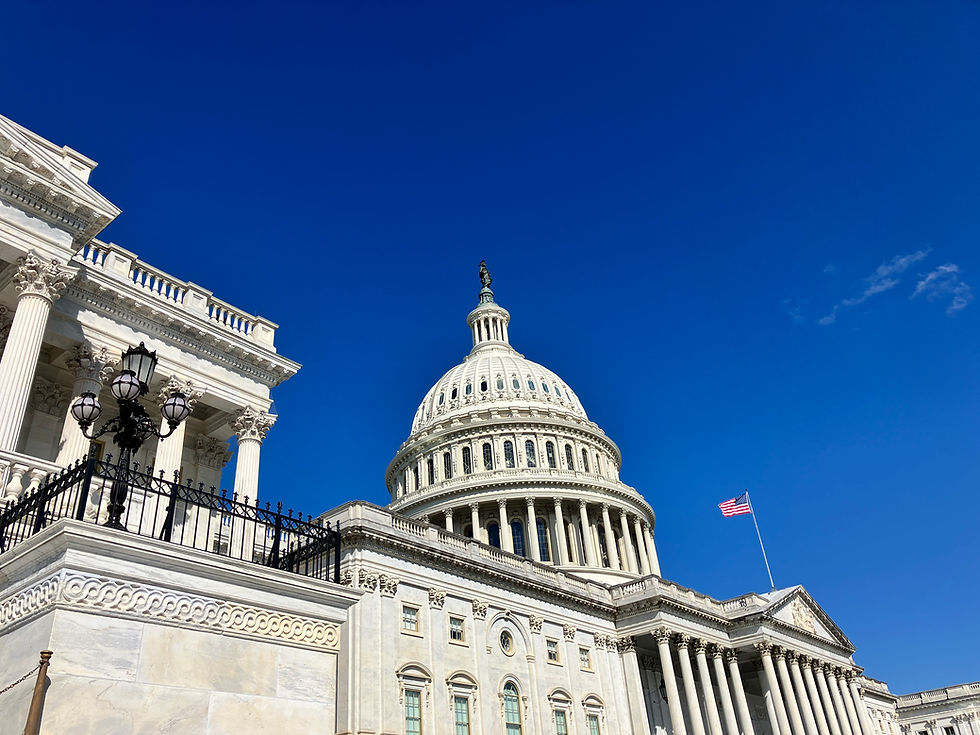Federal Milk Pricing is Due for an Overhaul
- WFU Blog

- Jul 28, 2021
- 4 min read
Updated: Jul 1
By Bobbi Wilson, WFU Dairy Together Consultant

Dairy farmers have been put through the wringer in recent years, and with shifts in milk pricing that cost U.S. dairy farmers an estimated $725 million in lost income1, 2020 was no exception. The massive losses resulted from record depooling and negative producer price differentials (PPDs) caused by a change to the Class I milk pricing formula in the 2018 Farm Bill, and exacerbated by the pandemic.
While this recent milk pricing debacle stirred an industry-wide discussion2 about correcting the Class I formula change, the Federal Milk Marketing Orders are long overdue for more substantive changes. .
With the next Farm Bill right around the corner, we have an opportunity to refocus milk pricing and dairy programs on farmer profitability and long-term stability. . Measures to address declining fluid milk sales, increase transparency, and promote democratic farmer participation in the hearing process should be considered, along with mechanisms to promote competitive markets and fair prices for dairy farmers.In the meantime, we should revert back to the so-called “higher of” formula3 while we explore holistic milk pricing solutions.
Americans are drinking less milk
Historically, fluid milk was the highest value product that contributed more to farm income than other types of dairy products. The federal orders allow all farmers and processors to share in the benefits of fluid milk sales, even those who participate in lower-value markets for manufactured products. But consumer preferences have changed. Americans are drinking less milk and eating more butter and cheese. At the same time the industry has expanded exports of manufactured products. This has turned a system that is based on abundant fresh milk on its head. Shrinking fluid milk sales prompted the 2018 Class I formula change in the first place, and is an underlying cause of the negative PPDs dairy farmers experienced over the last two years. Rather than opening a hearing to further amend the Class I formula, we should explore pricing solutions that address the long-term impact these changing dynamics will have on dairy farmers’ milk checks.
Milk pricing must be transparent
Most of the people I talk to about milk pricing will concede that it is overly complex and outdated. As the saying goes, “there are only five people who understand milk pricing and four of them are dead.” Decades of tinkering with formulas has resulted in a system that is only fully understood by the economists, milk handlers, and lawyers who dominate the hearing process. It has allowed milk pricing to lean more favorably toward processors over time, while the risks are increasingly shouldered by farmers. Dairy farmers need economic power when it comes to milk pricing, and that starts with transparency. It is time to evaluate alternative pricing methods that promote transparency and distribute the risks and profits more evenly throughout the supply chain.
Democratizing the hearing process
While there are a number of ways to improve milk pricing that could be considered, farmers must have the ability to propose solutions and vote independently on the desired changes. Bloc voting, the method currently used, can dilute farmers’ voices by allowing cooperatives, who often have a financial stake in dairy processing, to vote on their members’ behalf. Similarly, volume voting allows changes to be decided by those who produce the most milk. These rules give the largest players more power to decide on milk pricing changes that affect everyone. Federal order hearings should uphold a “one member, one vote” policy so all dairy farmers have equal representation and can vote purely for their own interests. This is especially important as consolidation in dairy cooperatives has resulted in a loss of democratic farmer control3.
Another way to democratize the hearing process is to eliminate the USDA’s rule that states any proposal not approved by a two thirds majority results in a termination of the order. The rule forces those who disagree with a proposal to choose between an undesirable change or to risk losing the benefits of regulated milk marketing. It also allows the largest players to kill an order - or threaten to kill it - if they disagree with a proposal. This kind of gatekeeping authority is antidemocratic. Farmers and co-ops should be able to propose, evaluate, and vote on changes without fear of losing the benefits of the federal orders.
Promoting fair prices and competition
Milk pricing is one part of a broader conversation about the future of dairy farming in America. This conversation must be a focal point of the next Farm Bill, which is due for reauthorization in 2023. In addition to federal order reform, we must also look at policy changes that promote fair prices and competition and put all the solutions on the table.
The good news is, these discussions are already starting. Last month Senator Gillibrand, Chair of the Senate Agriculture Subcommittee on Dairy and Livestock, called for a hearing to investigate the dairy industry. In a press conference, the Senator stated: “Even before the pandemic, dairy farmers were struggling to receive a fair price for their milk...I see (this) as a national security issue. We cannot lose the ability to feed our own people. If you have a market that’s fundamentally flawed and constantly leaving producers unable to survive in the industry, there’s a problem.”
Over the last decade, nearly half of the dairy farms in Wisconsin have gone out of business. Without government intervention, the future promises more of the same. We can no longer write off the decline of family farms as a necessary trade-off for growth in the dairy industry. If we want to create a viable dairy economy and keep family farms on the land, we must explore holistic solutions to milk pricing, competition policy, and federal dairy programs. The 2023 Farm Bill may be our last shot.






Comments